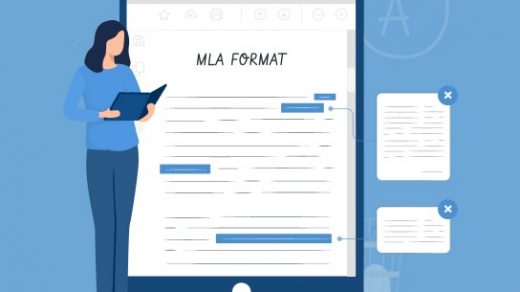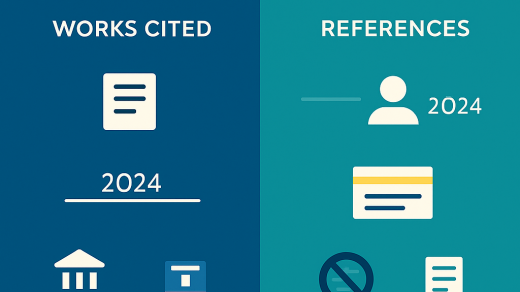Academic writing often celebrates individual voices, but some of the most meaningful and innovative work emerges from collaboration. From student group essays to multi-author journal publications, writing as a team introduces both creative energy and practical challenges. Collaboration amplifies perspectives but complicates questions of authorship, formatting, and attribution — especially when adhering to academic standards such as the Modern Language Association (MLA) style.
MLA format, well known for its clarity and focus on authorship, provides a strong foundation for collaborative writing. However, applying it correctly in group contexts requires nuance. Who should be listed as the author? How should shared sections be formatted? What about peer reviews, annotations, or revisions from multiple contributors? These questions are increasingly relevant in a world where learning, research, and publication are often collective efforts.
This essay explores how to apply MLA conventions to collaborative writing. It examines how to properly credit multiple authors, structure group essays, handle peer reviews, and ensure consistency in voice and formatting — all while maintaining the integrity of the academic record. Ultimately, understanding these conventions helps transform group projects from chaotic patchworks into cohesive, credible pieces of scholarship.
The Dynamics of Collaborative Authorship
At the heart of collaborative writing lies the question of authorship — not just who writes what, but who takes responsibility for the text as a whole. MLA’s focus on authorship transparency offers both structure and flexibility for co-authored works.
When multiple writers contribute equally, MLA style recognizes joint authorship by listing all contributors in the order agreed upon by the group. The order of names reflects the team’s consensus — it may follow the magnitude of contribution, alphabetical order, or institutional convention. In group essays for academic courses, instructors may require an additional author’s note clarifying the individual responsibilities of each participant.
For example, a title page (if requested) might include a note such as:
Authors:
Maria Gonzales, lead researcher and data analyst
Ben Carter, literature review and theoretical framework
Aisha Khan, editor and citation manager
This practice aligns with the MLA’s emphasis on clarity and acknowledgment of intellectual labor. It not only ensures fairness but also fosters accountability — a crucial value in collaborative academic settings.
The title of the work should appear centered, with all authors’ names on the line below. In cases where there are more than three contributors, MLA guidelines allow listing the first author followed by et al. in citations or on the works cited page. However, when all participants share equal ownership, it is preferable to include every name in full on the main title page or the essay heading.
Transparency in contribution is essential, especially as collaborative projects become more interdisciplinary. In digital humanities, for instance, teams often include writers, coders, designers, and editors — all of whom may contribute to both content and presentation. MLA’s flexible framework allows these diverse roles to be documented responsibly without compromising readability.
Structuring and Formatting a Group Essay
Writing collaboratively can easily lead to stylistic fragmentation — differences in tone, citation, or structure that reveal multiple hands at work. MLA style serves as a unifying system that standardizes layout, language, and referencing, ensuring that a collective text reads with a single coherent voice.
The key lies in organization and consistency. Before writing begins, groups should agree on a shared MLA template: margins (1 inch on all sides), font (typically Times New Roman 12 pt), spacing (double), and header format (last name + page number). Teams can also designate one member as the “formatting editor” to ensure uniformity.
The most common challenge is integrating different writing sections without disrupting flow. The introduction, body, and conclusion must connect logically, even if written by different contributors. Establishing a collaborative outline — one that defines argument flow, subtopics, and transition points — helps maintain unity.
MLA formatting rules remain unchanged in group essays, but attention to authorship cues becomes critical. For instance, when distinct voices or case studies appear in the same essay, subheadings can identify perspectives without breaking cohesion. Example:
Case Study: Media Ethics in Journalism — Written by Sam Lee
The rapid dissemination of information in the digital age challenges journalistic integrity…
Cross-Cultural Analysis — Written by Linh Tran
While Western models prioritize individual accountability, Eastern approaches…
These attributions can later be removed if the final version is meant to appear as a seamless whole. In student essays, however, brief authorship markers clarify division of labor for grading and transparency.
Another consideration is how to integrate peer feedback and group review notes. MLA encourages transparency in revision. If peer reviewers provide feedback within a collaborative project (as is common in group coursework or workshop settings), those comments should be acknowledged either in a footnote or in an appendix describing revision history. Example:
This section was revised following feedback from peer reviewers during the Writing Workshop, Spring 2025.
This subtle but professional acknowledgment honors the collaborative process and documents intellectual development — a core value of modern academia.
The table below summarizes best practices for group essay formatting in MLA style.
| Formatting Element | MLA Recommendation | Collaborative Adaptation | Example |
|---|---|---|---|
| Author Line | List all authors or first + et al. if 3+ | Include all names on first page for transparency | Maria Gonzales, Ben Carter, Aisha Khan |
| In-Text Citation | (Last name Page) | Use lead author’s name or group name | (Gonzales et al. 12) |
| Title Page | Not required but optional for clarity | Include author roles or contribution note | “Lead researcher: Maria Gonzales” |
| Section Headings | Use consistent formatting (bold, title case) | Label sections by author if needed | “Analysis — Linh Tran” |
| Peer Review Notes | Usually omitted | Add in appendix or footnote | “Revised after group discussion, May 2025” |
These conventions keep multi-author essays readable, fair, and academically sound — a hallmark of MLA’s adaptability.
Peer Reviews and Feedback in MLA-Guided Collaboration
In collaborative writing, feedback is not an afterthought — it’s part of the creative engine. Peer review transforms a draft from multiple perspectives into a cohesive, refined argument. In both academic classrooms and professional research teams, MLA style can serve as a framework for documenting this process transparently.
The modern peer review process goes beyond corrections; it involves critique, reflection, and response. Many instructors now encourage students to include peer review statements at the end of a paper or in a separate appendix. These statements might summarize what feedback was received and how it shaped revisions — a practice that aligns well with MLA’s commitment to intellectual honesty and traceable development.
A simple example might read:
Peer Review Summary:
Reviewer: Jordan Lee suggested restructuring paragraph 3 for stronger argument flow.
Reviewer: Sofia Morales noted inconsistent citation of digital sources, which was corrected using MLA 9th edition guidelines.
When submitting group research projects, acknowledging peer review makes the collaboration transparent while showcasing the authors’ engagement with academic standards. It also mirrors how formal scholarly publishing operates — every published article in an MLA-indexed journal undergoes anonymous review and response.
MLA style provides specific guidance for referencing unpublished peer-reviewed materials or internal drafts. If feedback is formally cited, such as in a research reflection essay, it can appear in the works cited list like this:
Morales, Sofia. Peer Review Comments on “Language in Digital Activism.” University of Vermont, 2025.
In digital environments, collaborative platforms like Google Docs, Overleaf, or Notion record detailed revision histories. MLA style doesn’t prescribe how to format digital contributions, but it supports citation of online collaboration tools when relevant. For instance, if part of the methodology or writing relied heavily on shared documents, an acknowledgment could appear in a note:
This document was collaboratively written and edited in Google Docs, with tracked revisions from all authors between March and May 2025.
Such statements enhance academic transparency — a growing priority in both educational and research ethics.
Equally important is maintaining a unified academic voice after peer review. Each contributor may write differently, but editing must harmonize tone, tense, and citation style. Instructors often advise designating a final editor or voice harmonizer — a team member responsible for reviewing the entire essay to ensure stylistic and linguistic consistency. In large-scale co-authorship (for instance, multi-institutional research), editorial oversight plays the same role, safeguarding the text’s coherence.
In short, peer review under MLA conventions is not merely procedural. It becomes part of the text’s evolution — a written dialogue that turns collective thought into refined scholarship.
Ethics, Integrity, and the Human Element of Co-Authorship
Collaboration is a powerful tool, but it also tests academic ethics. Misattribution of authorship, uneven participation, or unacknowledged editing can blur the lines of responsibility. The MLA Handbook (9th edition) underscores that ethical authorship demands honesty about who contributed to what, how sources were used, and what revisions were made.
One of the most debated areas concerns AI-assisted writing and digital collaboration tools. In multi-author settings, teams must decide collectively whether to acknowledge technological input, such as grammar checkers or AI suggestions. MLA now encourages transparent acknowledgment of “nonhuman collaborators” when they significantly shape the text — for instance, if AI tools were used to analyze data or suggest language.
Group essays should also include a statement of contribution if required by the instructor or publisher. Such a note might read:
All authors contributed equally to this paper. Maria Gonzales drafted sections 1 and 2; Ben Carter conducted data analysis; Aisha Khan finalized formatting and citations. All authors reviewed and approved the final manuscript.
This brief addition, often placed before the works cited page, eliminates ambiguity and models professional ethics found in real-world academic publication.
Equally essential is maintaining a spirit of intellectual humility. Group work thrives when contributors see themselves not as competing voices but as complementary ones. Writing collaboratively under MLA standards encourages respect for both the precision of form and the diversity of thought. When the structure is handled ethically and consistently, it allows creativity to flourish within clear boundaries — much like a symphony following a shared score.
Conclusion: Collaboration as a Modern Form of Scholarship
Collaborative writing challenges the myth of the solitary scholar. It transforms writing from an individual act of expression into a communal act of construction — an exchange of ideas, perspectives, and styles. MLA style, with its emphasis on authorship, transparency, and structure, provides the scaffolding that makes such cooperation not only possible but productive.
By applying MLA conventions thoughtfully, writers can turn complex group projects into polished, cohesive works that uphold the same standards of rigor as single-author essays. Proper attribution clarifies responsibility; consistent formatting unifies tone; peer review refines quality; and ethical transparency builds trust.
In an age where scholarship increasingly crosses disciplinary, cultural, and digital boundaries, collaboration has become both inevitable and invaluable. The MLA framework reminds us that even as the number of voices grows, clarity of authorship and integrity of communication must remain at the center.
Ultimately, writing together — when guided by shared principles and respect for form — does more than produce good papers. It teaches the essence of scholarship itself: that knowledge is not owned, but co-created.




